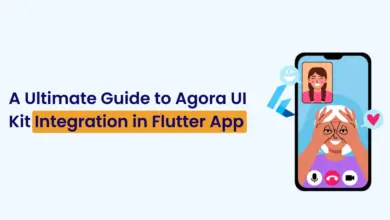Decoding the NDC Booking Flow: A Comprehensive Guide

The New Distribution Capability (NDC) is an initiative championed by the International Air Transport Association (IATA) within the airline retailing ecosystem. Its core objective is to modernize the distribution and sale of airline products across diverse traveler segments, encompassing corporate buyers, leisure travelers, and business clientele. The NDC framework operates on an XML-based data communication standard, enhancing the capability of airlines to retail their offerings through various intermediaries, including Online Travel Agencies (OTAs) and Global Distribution Systems (GDSs), while ensuring richer content and personalized offers.
For both airlines and prominent Online Travel Agents (OTAs), the New Distribution Capability (NDC) presents a pivotal shift in the distribution landscape. It empowers them to offer travelers tailored offers and orders, enriched with dynamic pricing and rich content, driving ancillary revenue and enhancing the overall customer experience. Yet, the integration of NDC into airlines’ operational systems requires a deep grasp of the XML-based data exchange standards and the nuances of the offer and order management systems inherent in the NDC booking process.
NDC Booking Flow Integration and Synchronization

The NDC booking flow exemplifies a meticulously architected and integrated procedure, aiming to provide an uninterrupted user interface throughout the booking continuum. Each segment within this framework synergistically operates to guarantee an optimized and streamlined reservation trajectory.
“SHOP” – Comprehensive Flight and Service Aggregation
The “SHOP” segment provides an extensive array of flight selections and supplementary services, enabling users to opt for bespoke solutions. This segment is pivotal, laying the groundwork for the entire reservation interface.
“ORDER” – Tailored Booking Configuration
During the “ORDER” segment, users are endowed with the capability to configure their reservations, aligning with their specific needs and stipulations. This granularity in customization distinguishes it from conventional booking systems.
“PAY” – Encrypted Payment Processing
Within the “PAY” segment, users encounter a fortified and varied spectrum of payment methodologies, ensuring the culmination of the reservation procedure with paramount security and ease.
“SETTLE” – Financial Operations Optimization
The “SETTLE” segment is characterized by its proficiency in fiscal transactions. Airlines and OTAs employ uniformed and mechanized processes to curtail inconsistencies and enhance their fiscal outcomes.
“ACCOUNT” – Analytical Data Utilization
The essence of the “ACCOUNT” segment is the strategic utilization of data for informed decision-making. Airlines and OTAs amass pivotal data during the reservation phase, which becomes crucial in honing marketing tactics and strategic determinations.
“SET UP”- NDC Standardization and Integration
The “SET UP” segment in NDC assimilation focuses on the congruence of IT infrastructures between airlines and Online Travel Agents (OTAs) to comply with NDC benchmarks. This encompasses the adoption of XML-centric data relay protocols, initiation of API linkages, and the fortification of security protocols.
In essence, the NDC booking flow is predicated on its integrated architecture, assuring a fluid user journey. Solid data conduits and agile feedback systems underpin this complex framework, ensuring the synchronized functionality of each segment and amplifying the overarching user interface.
In this article, we will delve into an in-depth analysis of these integral components, elucidating their interconnectedness in shaping the overarching NDC booking architecture. This profound insight empowers airlines and Online Travel Agencies (OTAs) to harness the capabilities of NDC, optimizing the reservation journey for travelers and realizing their strategic business goals.
Phase 1 – NDC Booking Flow: The “SHOP” Phase
The “SHOP” phase is a critical juncture in the New Distribution Capability (NDC) booking flow, where passengers commence their travel itinerary by querying flight databases and scrutinizing the comprehensive portfolio of offerings curated by the airline. This phase epitomizes the revolutionary capabilities of NDC API integration, facilitating airlines to conduct dynamic, real-time engagements with passengers, informed by their distinct preferences and historical travel data. This bespoke shopping paradigm yields manifold benefits, encompassing augmented revenue trajectories for airlines and elevated passenger contentment metrics.
Bespoke Offerings in the Shopping Matrix
A salient attribute of the NDC “SHOP” phase is its prowess in curating customized propositions for passengers. Utilizing advanced data analytics and passenger segmentation, airlines can orchestrate real-time propositions and advisories that resonate seamlessly with individualized passenger inclinations. For example, a recurrent corporate traveler might be presented with propositions for elite amenities, whereas a recreational traveler might be allured by holistic holiday bundles. This granular approach in NDC integration not only refines the shopping matrix but also augments potential revenue channels for airlines.
Direct Distribution Paradigm
The essence of direct distribution is embedded in the NDC “SHOP” phase. Airlines are poised to delineate their product and service suite directly to passengers, obviating the overheads traditionally tethered to legacy distribution conduits like Global Distribution Systems (GDSs). This paradigmatic shift towards direct distribution can catalyze significant fiscal efficiencies for airlines, amplifying the allure of NDC.
Intermediary Entities in the NDC Ecosystem
Albeit airlines can capitalize on direct distribution, intermediary entities such as Online Travel Agencies (OTAs) remain integral in the NDC “SHOP” phase. OTAs augment the distribution bandwidth for airlines, proliferating their visibility across a diverse passenger demographic. Additionally, OTAs proffer value-added utilities to passengers, spanning fare analytics to travel itinerary orchestration, enhancing the shopping matrix’s depth.
Leveraging Rich Content in the Shopping Ecosystem
In the NDC “SHOP” phase, airlines can harness the formidable potential of rich content integration. This encompasses multimedia elements like high-resolution imagery, immersive videos, and interactive modules, which are pivotal in amplifying the shopping experience. Here’s an elucidation:
- Product Differentiation and Ancillary Monetization: Rich content equips airlines to carve a distinct niche in a saturated market landscape. By elucidating their product suite through immersive content, airlines can establish a unique brand identity. Concurrently, this medium can be harnessed to monetize ancillary offerings, such as premium seating or onboard amenities, crafting a holistic proposition for passengers.
- Influencing Passenger Decision Metrics: The impact of rich content on passenger decision algorithms is significant. Passengers gravitate towards airlines that proffer exhaustive and visually immersive insights into their offerings. Empirical studies, such as those by Expedia, underscore that rich content can escalate conversion metrics by substantial margins, underscoring the instrumental role of visual elements in molding passenger decisions.
Practical Implementations
Aviation giants like Emirates and Lufthansa have adeptly tapped into the rich content paradigm to refine the shopping matrix. Emirates integrates 3D seating schematics and virtual cabin explorations on its digital platforms, enabling passengers to envisage their flight experience pre-booking. In parallel, Lufthansa captivates its audience with an immersive virtual reality showcase of its business class suite. These avant-garde implementations not only inform but also enchant passengers, bolstering passenger contentment and catalyzing revenue trajectories.

Phase 2 -“ORDER”: Advancing Beyond Conventional Reservation Frameworks
In the NDC (New Distribution Capability) booking paradigm, the “ORDER” phase signifies a paradigm shift in flight reservation methodologies, transcending traditional reservation infrastructure. This phase enables passengers to transcend standard booking procedures, facilitating the selection of flights and a comprehensive array of ancillary services. These services range from seating preferences to luggage specifications and culinary options. The “ORDER” phase marks a significant deviation from previous constraints, heralding a bespoke and individualized reservation experience.
Utilizing Enhanced Flexibility and Customization
The NDC’s order management framework grants airlines the capability to revolutionize the reservation process, incorporating enhanced adaptability and customization. This shift promises numerous advantages for both carriers and passengers. Airlines, for instance, can access novel revenue channels, while passengers enjoy a reservation experience meticulously tailored to their specific requirements. Passengers, for example, can now assemble custom packages of ancillary services, perfectly aligned with their distinct travel needs.
Transformation in Travel Agent Roles
Within the NDC order phase, the function of travel agents is undergoing significant transformation. Equipped with NDC’s advanced functionalities, travel agents now offer more personalized booking solutions to their clientele. As intermediaries, they facilitate a more detailed and client-focused reservation experience.
Dynamic Offer Creation for Tailored Personalization
Central to the “ORDER” phase is the concept of dynamic offers – individualized incentives crafted based on each traveler’s preferences and travel history. These custom offers include a variety of personalized ancillary services, such as exclusive lounge access, priority boarding, and sought-after extra legroom seating.
Significance of Consumer Data
In the generation of dynamic offers, consumer data plays a crucial role. Airlines analyze extensive customer data, gaining deep insights into passenger preferences and necessities. Utilizing this information, airlines can develop offerings that resonate profoundly with their clientele, resulting in increased revenue for airlines and heightened satisfaction for customers.
Realizing the Potential
Several airlines have effectively utilized dynamic offers to redefine the reservation experience. Air France-KLM, for example, has seen a notable 25% increase in ancillary revenue by offering personalized ancillaries. Similarly, Lufthansa’s implementation of dynamic pricing for ancillary services has led to a significant 20% increase in revenue.
By integrating dynamic offers into the booking process, airlines not only enhance customer satisfaction but also benefit from augmented revenue streams.
Phase 3 – “PAY”: Streamlined and Secure Transactional Processes
The “PAY” component within the NDC transactional sequence is pivotal in guaranteeing streamlined and secure financial exchanges, advantageous for both aviation operators and passengers. This section explores the complexities of NDC’s financial transaction mechanisms and the criticality of incorporating a variety of NDC transaction methodologies.
NDC Financial Transaction Mechanisms: Streamlined and Secure
The NDC’s financial transaction protocols are intricately engineered to provide a frictionless and secure transactional experience, thereby bolstering trust among both aviation operators and passengers. This stage enables aviation operators to offer an extensive assortment of NDC transaction options, addressing the needs of their international customer base. Concurrently, NDC enforces stringent security protocols to protect confidential transactional data.
Comprehension of NDC Financial Transaction Mechanisms
NDC employs a uniform transactional messaging schema, universally endorsed by leading transactional processors within the NDC framework. This strategy allows aviation operators to facilitate transactions through various channels, including credit cards, debit cards, mobile payment systems, and NDC’s online transaction portals.
The typical online transaction process within the NDC framework progresses as follows:
- Step 1. Passenger’s Transaction Selection: During reservation, the passenger opts for their preferred transaction method within the NDC framework.
- Step 2. Transaction Authorization Request: The aviation operator generates an online transaction authorization request within the NDC framework and transmits it to the passenger’s selected transaction processor.
- Step 3. Authentication and Authorization: The transaction processor authenticates the passenger’s transaction details and approves the financial exchange.
- Step 4. Transaction Confirmation: Following successful authorization, the transaction processor sends a transaction confirmation to the aviation operator.
- Step 5. Issuance of Ticket and Travel Documentation: The aviation operator then issues the passenger’s ticket and any relevant travel documentation.
The Importance of Diverse NDC Transaction Methods
In the globally interconnected aviation industry, providing an array of transaction solutions is essential for aviation operators targeting an international clientele. Different geographical regions exhibit varied preferences in transaction methods. Thus, diversifying these options ensures accommodation of all passenger requirements.
For example, while credit cards are predominantly favored in the United States, mobile payment systems are more prevalent in China. By embracing this variety, aviation operators streamline the reservation process for passengers from various global regions.
Ensuring NDC Transaction Security: NDC’s Dedication
NDC prioritizes transaction security, adopting a comprehensive approach to protect sensitive transaction data. These security measures encompass:
- Encryption: Conforming to Industry Standards
All transaction data transmitted within the NDC framework for aviation operators is encrypted using industry-standard algorithms. This encryption ensures that transaction data remains secure and indecipherable to unauthorized parties during transmission.
- Secure Data Transmission: Utilizing HTTPS Protocols: Data transmission within the NDC framework is secured using HTTPS protocols, ensuring the safe transfer of transaction data and preventing unauthorized access.
- Tokenization: Securing Sensitive Information: To protect sensitive transaction details like credit card numbers, NDC employs tokenization, substituting actual data with tokens that are ineffective in unauthorized transactions, thereby adding an extra security layer.
- Fraud Detection: Sophisticated Security Measures: NDC incorporates advanced fraud detection systems within its security architecture, designed to identify and prevent fraudulent activities, safeguarding both aviation operators and passengers from financial risks.
- Collaboration with Reputable Transaction Gateway Partners: NDC collaborates with trusted transaction gateway providers, known for their steadfast commitment to security and dependability. These alliances enhance the overall integrity of transaction processing within the NDC ecosystem.
The Assurance of Secure Transactions
Through the meticulous implementation of these stringent security measures, aviation operators and Online Travel Agencies (OTAs) can assure their customers of the safety of their transactional data within the NDC framework. This assurance fosters customer trust and loyalty, leading to increased reservations and a reputation for maintaining secure and reliable transaction processes.
Phase 4 – Enhancing Operational Workflow with the “SETTLE” Phase of NDC Protocol
The “SETTLE” phase within the New Distribution Capability (NDC) booking flow triggers the financial reconciliation mechanism, crucial for upholding optimal operational efficacy. NDC’s introduction for airlines ushers in a standardized and automated settlement framework, substantially diminishing discrepancies and amplifying the financial procedures of both airlines and Online Travel Agencies (OTAs).
Refined Settlement for Augmented Operational Efficiency
The significance of NDC in refining financial workflows is paramount. Airlines, especially, are poised to reap manifold benefits by curtailing discrepancies during the settlement phase:
- Precision in Financial Analytics: A decline in discrepancies culminates in more accurate financial analytics, empowering airlines to strategize based on verifiable metrics.
- Optimized Revenue Cycle Management: Proficient settlements translate to enhanced revenue cycle management, facilitating airlines in more strategic resource allocation.
- Fortified Industry Collaborations: Refined settlements foster superior affiliations with industry stakeholders and vendors, nurturing trust and synergy within the aviation ecosystem.
By integrating NDC’s sophisticated settlement protocol, airlines can elevate their operational robustness and fiscal outcomes.
Phase 5 – “ACCOUNT” Phase: Harnessing Actionable Intelligence
Within the NDC transactional framework, the “ACCOUNT” stage emphasizes the systematic aggregation and application of data to extract actionable intelligence. NDC equips airlines and Online Travel Agencies (OTAs) with the capability to amass critical data throughout the reservation sequence, encapsulating user inclinations, transactional trajectories, and ancillary acquisitions.

Strategic Refinement Through Data Analytics
The strategic interpretation of this amassed data is crucial for the optimization of marketing tactics. Airlines and OTAs can leverage consumer behavioral analytics and inclinations to customize their promotional endeavors, pinpointing distinct consumer demographics. This culminates in:
- Augmented User Interaction: Precision-targeted marketing amplifies user interaction, establishing robust affiliations between voyagers and airlines or OTAs.
- Elevated Transactional Efficacy: Precision-focused promotional tactics culminate in superior transactional efficacy, seamlessly metamorphosing prospects into confirmed reservations.
- Revenue Amplification: By synchronizing promotional endeavors with user inclinations, airlines and OTAs can escalate revenue and holistic operational output.
The multifariousness of data application is evident, with airlines and OTAs deploying data analytics for diverse strategic determinations. This encompasses pinpointing novel revenue avenues via the scrutiny of ancillary acquisition patterns and calibrating pricing tactics grounded in demand oscillations and competitive reconnaissance. By capitalizing on data-driven intelligence, enterprises can execute judicious resolutions that bolster expansion and market dominance.
Phase 6 – Setting the Stage with “SET UP”
The “SET UP” phase is the foundational step in the NDC booking flow, crucial for the effective integration and operation of the New Distribution Capability (NDC) standard. Airlines and Online Travel Agents (OTAs) must synchronize their IT frameworks in accordance with NDC XML-based data communication standards to guarantee a streamlined implementation.
Technical Specifications and System Synchronization
The prerequisites for NDC integration involve the adoption of XML-based data transmission protocols, establishing direct API connections with airline reservation systems, and instituting robust security protocols. A synergistic approach between airlines, OTAs, and their IT divisions or tech associates is paramount to ensure the meticulous execution of these technical dimensions.
In addition to the technical specifications, an in-depth orientation and acclimatization of staff with the intricacies of NDC integration are of paramount importance. Adequate training equips personnel to:
- Elevate Customer Assistance: Proficiency in NDC integration methodologies allows the team to offer superior customer assistance, addressing queries and issues with efficacy.
- Leverage NDC Capabilities: Employees adept in NDC can harness the full suite of its features, refining the entire reservation process.
- Contribute to Implementation Success: The expertise of the workforce is a linchpin in determining the overarching success of NDC assimilation.
By orchestrating the requisite tech infrastructure and imparting exhaustive training, airlines and OTAs can flawlessly embed NDC into their modus operandi. This actualizes the full spectrum of NDC’s capabilities, augmenting customer interactions, and propelling organizational advancement.
Tackling Obstacles in NDC Transactional Workflow
While the New Distribution Capability (NDC) presents a myriad of opportunities for aviation entities and Online Travel Agencies (OTAs), its amalgamation is not devoid of technical impediments. In this context, we analyze prevalent bottlenecks during NDC amalgamation and discuss robust strategies for their alleviation.
- Integration Technicalities
The fusion of NDC Application Programming Interface (API) brings forth technical impediments such as the assimilation of novel communication protocols, maintaining robust connectivity, and fortifying security protocols. Nonetheless, these impediments can be deconstructed by synergizing with Information Technology (IT) contingents or technological associates. Engaging with domain specialists can render these technicalities tractable, facilitating a streamlined NDC API amalgamation trajectory.
- Data Homogenization Barriers
The fusion of NDC mandates data homogenization to facilitate optimized data transmission across heterogeneous infrastructures. To counteract this impediment, aviation entities and OTAs can promulgate lucid data protocols and benchmarks for both in-house contingents and external associates. By instituting homogenized data schemas, the conundrum of data homogenization can be proficiently addressed.
- Disruptions to Conventional Commercial Paradigms
NDC amalgamation challenges the status quo of aviation commercial paradigms by empowering airlines to proffer ancillary offerings to passengers, occasionally circumventing traditional distribution conduits. To navigate this disruption, airlines necessitate a paradigm shift. Architecting revenue blueprints that harness NDC’s potentialities, whilst preserving invaluable affiliations with OTAs, is pivotal to this metamorphosis.
- Deriving Intellect from Precursors
Assimilating the chronicles and takeaways of NDC vanguards can furnish pivotal directives. By scrutinizing the trajectories and insights of these trailblazers, aviation entities and OTAs can accrue critical intellect and orientation for their NDC fusion endeavors. These vanguards can epitomize the roadmap for efficacious NDC deployment.
- Adherence to Optimal Protocols as the Trajectory Forward
To guarantee a frictionless NDC amalgamation, aviation entities and OTAs must comply with optimal protocols. This encompasses sustaining transparent liaison channels with associates, allocating resources for exhaustive personnel orientation on NDC, and executing rigorous validation prior to the formal inauguration. By endorsing these optimal protocols, the transition to NDC can be orchestrated with utmost precision.
In summary, while the path to NDC integration is fraught with challenges, proactive and strategic resolution, coupled with the implementation of best practices and collaboration with a systems integrator specializing in NDC, can position airlines and OTAs to capitalize on the opportunities presented in the dynamic travel industry landscape.
OneClick: Your Trusted NDC Integration Partner
OneClick stands out as a premier facilitator of NDC API integration services, demonstrating deep expertise in the technical and operational aspects of NDC. Our in-depth understanding of the NDC protocol and its complex integration processes establishes us as a key ally for airlines and Online Travel Agencies (OTAs) aiming to master the NDC framework.
- Robust NDC Integration Framework
OneClick delivers a robust, end-to-end solution for NDC integration, covering the entire spectrum of the NDC booking process: SHOP, ORDER, PAY, and POST. Our comprehensive strategy enables airlines and OTAs to engage effectively in the NDC environment, ensuring a seamless integration across all aspects of the NDC architecture.
- Adaptable and Scalable Solutions
Our solutions for NDC integration are designed to be both adaptable and scalable, meeting the unique needs of each airline or OTA. This adaptability guarantees that organizations of varying sizes and complexities can effectively utilize OneClick’s expertise in NDC, maximizing the benefits of this technology.
- Specialized NDC Expertise
OneClick prides itself on a team of NDC specialists, possessing vast experience in guiding airlines and OTAs through every phase of NDC integration. From strategic formulation to flawless implementation and continuous support, our professionals are dedicated to enhancing your NDC strategy.
- Forefront of NDC Innovation
Our dedication to pioneering innovation in NDC integration propels us to continuously evolve our solutions, keeping airlines and OTAs ahead in the industry. Collaborating with OneClick grants access to the most advanced NDC integration technologies available.
OneClick’s solutions are intricately engineered to refine the booking process, boost operational effectiveness, and augment the customer journey. In summary, our mastery in NDC integration, combined with our commitment to tailored solutions and industry best practices, solidifies our position as the go-to NDC system integrator for airlines and OTAs ready to exploit the full potential of NDC.
Final Thoughts: NDC as the Future of Airline Commerce
NDC emerges as a transformative catalyst in the aviation sector, heralding a paradigm shift towards enhanced efficiency, granular personalization, and a customer-centric offer and order management system. Its profound implications span across airlines and OTAs, arming them with the XML-based data communication capabilities to diversify their ancillary product portfolio, augment revenue avenues, and solidify customer allegiance.
At OneClick, we recognize the pivotal role of NDC standardization for our distinguished clientele. We are steadfast in our mission to provide holistic solutions meticulously crafted to align with each client’s distinct specifications. Our adept consortium of professionals remains resolute in its dedication to proffering tailored solutions and disseminating industry-aligned best practices to guarantee seamless NDC adoption.
Our in-depth acumen in NDC flow integration capacitates our clients to refine the offer creation process, bolster operational agility, and enhance the end-to-end traveler experience. If you’re primed to leverage the multifaceted benefits of NDC for your airline or OTA, we ardently advocate delving into OneClick’s NDC integration offerings. Engage with us promptly to initiate the process of actualizing NDC’s comprehensive advantages for your enterprise.





